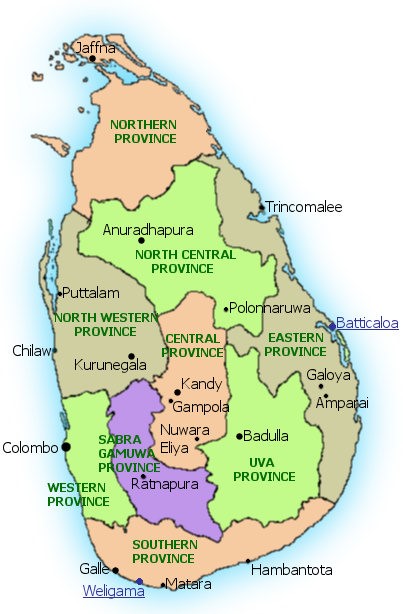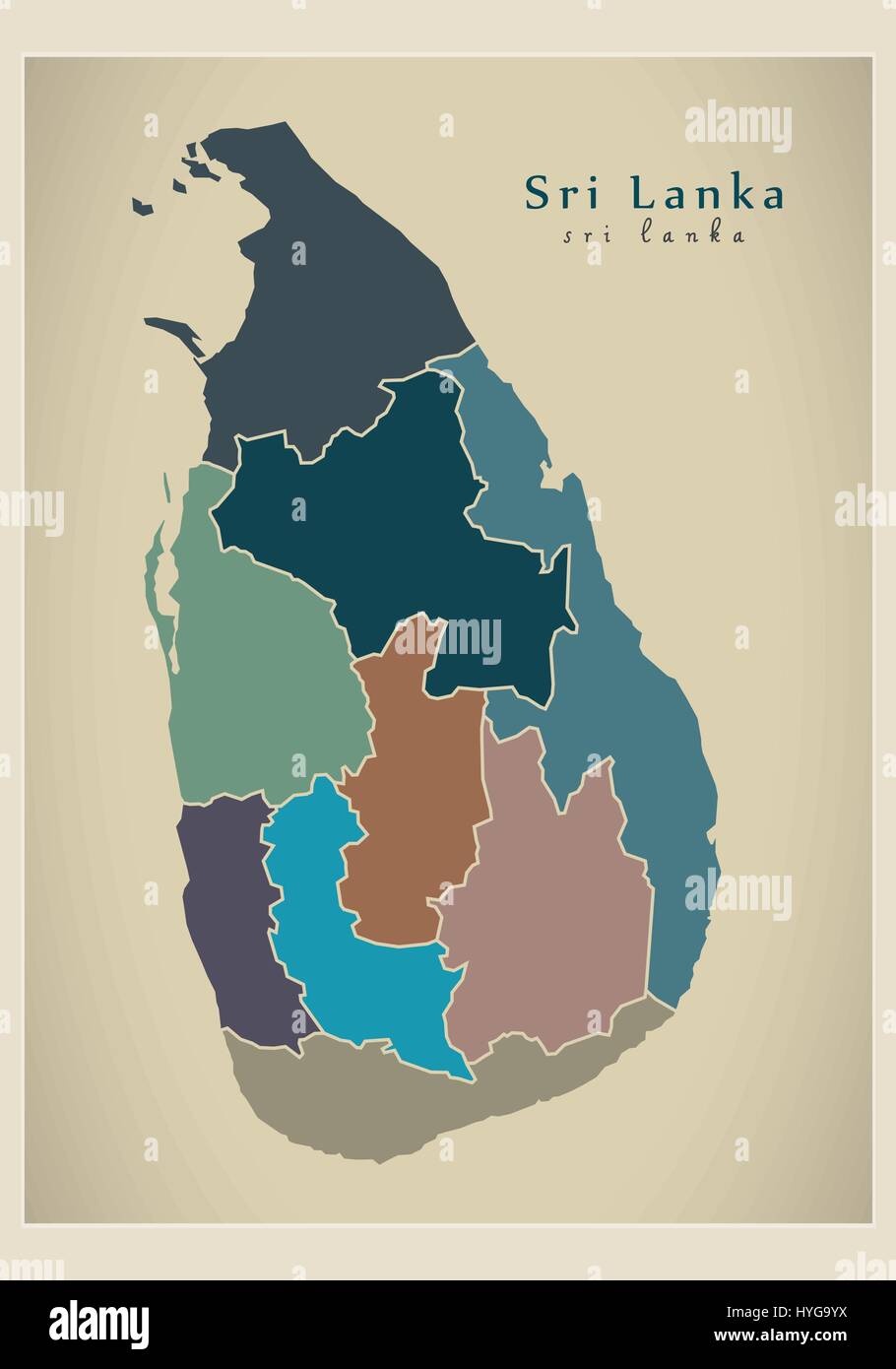

The provinces are highly irregular in shape, with curves and jagged edges.

These provinces acquired legal status in 1987, when the 13th Amendment to the Constitution of Sri Lanka established Provincial Councils. This completed the creation of the nine provinces which we use today. ‘Uva Province’ was created in 1886 and ‘Sabaragamuwa Province’ in 1889. It comprises today of Anuradhapura and Polonnaruwa districts. The ‘North Central Province’ was created in 1873. It contains today the Kurunegala and Puttalam districts. The ‘North Western Province’ was created in 1845. Starting from 1845, four new provinces were added to the list. The traditional administrative units of disawani and korale were absorbed into these five provinces. Central Province contained the districts in the central highlands. Western Province contained Colombo, Chilaw, Puttalam, Lower Bulatgama, Tun korale, Satara korale, and Sat korale. Eastern Province was composed of the districts of Trincomalee, Batticaloa, Bintenna and Tamankaduwa. Southern Province consisted of the districts of Galle, Hambantota, Matara, Tangalle, Lower Uva, Sabaragamuwa and Wellassa. The Northern Province consisted of the districts of Jaffna, Mannar, Vanni and Nuwarakalaviya. On the recommendation of the Colebrook-Cameron Commission of 1832, the British rulers created five large provinces, labelled North, South, East, West and Central in 1833. These provinces are ‘new’ provinces imposed on the island by the British rulers in the 19th century. They are not ‘natural’ provinces formed through migration and settlement either. Ggplot( province) + geom_sf( mapping = aes( fill = PROVINCE), show.legend = TRUE)ģ.The provinces of Sri Lanka, (Northern, Central, Eastern, Western, North Central, North Western, Uva, Sabaragamuwa and Southern) are not ‘historical’ provinces set out by the Sinhala kings.


 0 kommentar(er)
0 kommentar(er)
